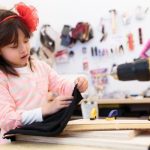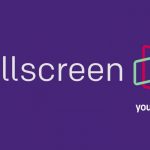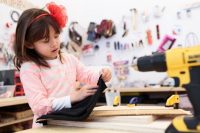Can Techie Parents Reinvent School For Everyone–Or Just Their Rich Kids?
Six-year-old Tiana had just gotten her ice cream machine working for the first time, and she was triumphant. Wrapped in hot pink decorations and duct tape, the device was now capable of churning out flavors that the young scientist planned to dub “Mint Speshel” and “Tiana’s Dlitght.”
Eyes wide, Tiana turned to her teacher, Shira Leibowitz.
“Shira, this is the most important day of my career,” she declared.
Leibowitz, a founding team member of startup Portfolio School in Manhattan’s Tribeca neighborhood, recalls that story with a laugh. Portfolio School has been designed to look and operate more like the workplace of the future than the classroom of today, but no one expected students to internalize that approach quite so literally.
“They view themselves as working,” says Leibowitz, who has a doctorate in education. “They’re never learning something because one day they’ll need it, they’re learning something because they need it right now.”
As in a modern office, a typical day at Portfolio School revolves around individualized goals and collaborative, interdisciplinary projects. Tiana’s ice cream machine was the culmination of a unit called “learning is delicious,” which ran the course of the fall 2017 semester. As students explored that theme and built their machines, they learned about science (states of matter), math (measurement), and history (the commercialization of ice). When I first visited the school one morning last October, Tiana had just produced a trial batch of mint ice cream and proudly shared a bowl with me.
“I made it,” she said as I sampled a spoonful, green leaves and all.
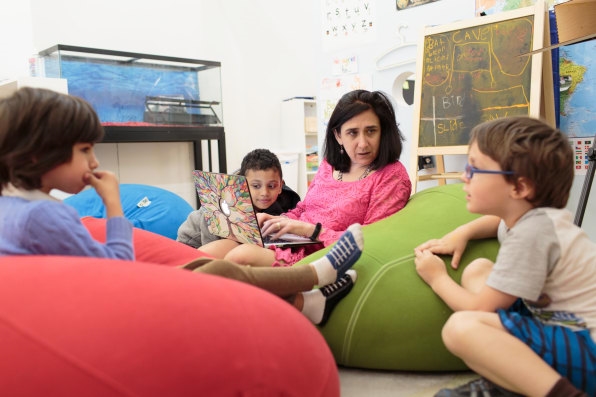
Portfolio School is at the vanguard of a movement of startup schools seeking to foster learning experiences, like Tiana’s, that map to the jobs of the future. Many are “micro-schools,” where students of different ages occupy a single multi-purpose space. Many are based on the Montessori method, which emphasizes curiosity and guided choice. And nearly all of these startup schools aim to personalize learning by using technology to deliver individualized lessons alongside group activities.
Perhaps it should come as no surprise that the founders of this new wave of schools are often former technology executives who have started families. In their previous roles they ushered in a new way of working, now prized across industries, which values collaboration, creativity, and iteration. They look at traditional school, with its textbooks and lock-step progressions, and see the need for revolution.
Portfolio School cofounder and CEO Babur Habib fits that profile exactly. He grew up in Pakistan, where he attended public schools, and moved to the U.S. to pursue his PhD in engineering. (He and cofounder Doug Schachtel, who manages operations, met on the squash courts at Princeton, where Habib earned a doctorate in engineering.) Early in his career, Habib designed and debugged microprocessors. Later, he cofounded an education company that was eventually acquired by Intel in 2014. After the deal closed, Habib spent a year managing the integration. Around the same time, his daughter Sophia was born.
“That was the eye opener,” he says of his stint developing educational mobile and tablet applications at the hardware processor. “I visited so many schools, talked to so many administrators.” Over time he grew to share school leaders’ frustrations. Constraints, like classroom design, limited their ability to experiment with technology.
“There’s so much room to reimagine this stuff,” says Habib. “If things are changing in the real world, why aren’t they changing in schools?”
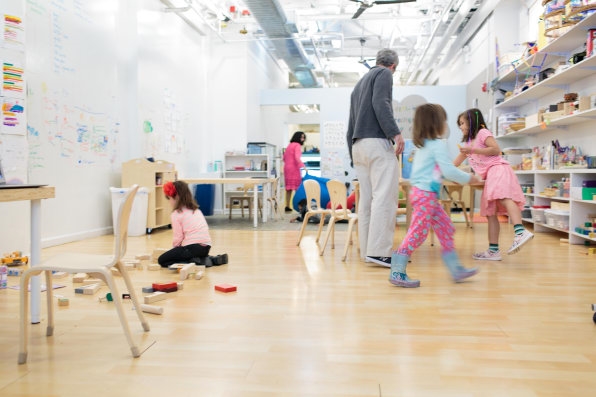
Other parent-technologists have arrived at a similar conclusion.
In the heart of Silicon Valley, Khan Academy founder Sal Khan established a complementary lab school that he describes as “Montessori 2.0.,” infused with the type of video-based math lessons that Khan Academy has popularized since 2007 (early Snap investor Hemant Taneja sits on the lab school’s board). Across the country, former Google executive Sep Kamvar created Wildflower Montessori, which launched as a storefront school in Cambridge, Massachusetts, in 2014, and has since added nearly a dozen locations. And then there is AltSchool, a network of micro-schools that is the brainchild of another former Google executive, Max Ventilla. He has managed to recruit an executive team that includes parent-leaders from Airbnb, Uber, and Zynga.
“‘I want something better for my child’—that’s what’s motivating a lot of these high-tech entrepreneurs,” says Tony Wagner, a former teacher who now serves as an expert in residence at Harvard’s Innovation Lab.
Wagner, who advises Portfolio School, sees the growing interest in startup schools as both a reaction against the dominance of test-prep pedagogical regimes and an embrace of the knowledge and skills that future jobs will likely reward.
“The big leap we’re trying to make is moving away from content standards to performance standards,” Wagner explains. “Can you use knowledge, can you apply knowledge?” Demonstrating mastery of chemistry, in this line of thinking, would involve designing a study and presenting the findings, rather than memorizing the periodic table.
“Content is not as important anymore. Content is in our back pockets, literally,” Habib says, gesturing toward his iPhone. “Whatever knowledge you’ve gained, how do you apply it? That is the central thesis of this school. We feel that the creative process of taking an idea and then producing something out of it is so important, so important for the future.”
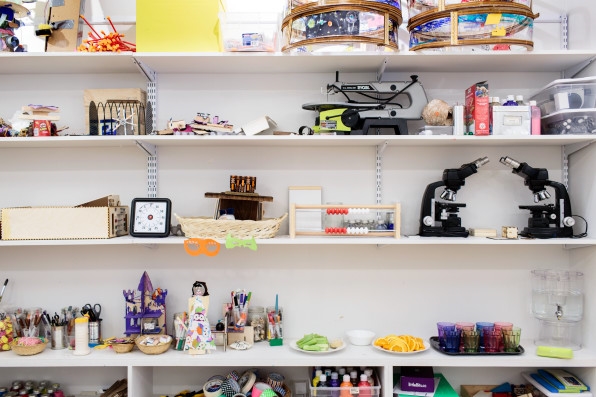
But as Habib and other parent-founders are discovering, turning lofty pedagogical aspirations into daily reality for a small group of children is no easy task.
It requires patience, for one. Habib, who previously taught physics at Stanford and authored papers on quantum dots, has had to learn how to explain the basics to tiny beginners. During one of my visits to Portfolio School, I found Habib at a whiteboard, teaching long division to an advanced 7-year-old. Habib and Schachtel are not trained educators, but they have taken a hands-on approach in their school’s classrooms and made a point of hiring expert counterparts. After recruiting Leibowitz, they signed on engineer-turned-teacher Nancy Otero, who previously created digital fabrication labs for schools in China, Brazil, and Spain.
At Portfolio, Otero installed a “Makerspace” in one corner of the rented ground floor space that the school occupies. Wire cutters, a sewing kit, and other tools hang from pegboards on the wall. There is also a soldering iron, which Portfolio’s kindergarteners wield with surprising aplomb.
“We don’t distinguish for the kids between a pencil or a scissors or a 3D printer or a laser cutter or a book or an online science simulation,” says Leibowitz. “They use what they need when they need it to learn and to create, so that it’s seamless. It’s not ‘now we’re going to technology, now we’re going to the art room.’”
That approach was evident one day in February, as Tiana and another student experimented with a circle of LEDs powered by an Arduino and surrounded by pieces of flame-shaped plastic. The students, who were studying color, had decided to construct a “campfire.”
As a first step, they had to get their code working. On a glowing screen, they reviewed the logic for one possible effect:
to startup loop
add 4 white
add 4 yellow
add 4 orange
add 4 red
Otero glanced at their progress, nodding. “Kids this age can do amazing things,” she said.
The color unit, which had been inspired by a movie about prehistoric cave paintings in France, would conclude with a shadow puppet show presented to parents and guests. In addition to light, students were learning about the chemistry of pigments, the use of camouflage in nature, and rainbow myths in ancient cultures.
“Look, masterpiece!” Tiana said, holding the campfire aloft as she floated past the kid-size table where students were pausing for a mid-morning snack of carrots and grapes.
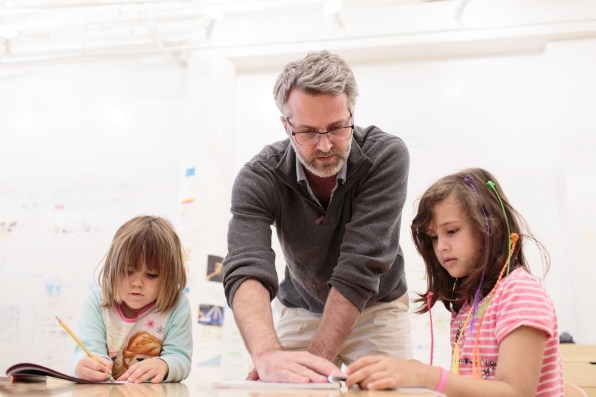
Before Portfolio, Tiana was homeschooled by her mother, Jackie, who paused her Wall Street career to oversee a schedule that included piano and violin lessons and trips to the Metropolitan Museum of Art. But Jackie felt limited by her own breadth of experience: “I only knew traditional school.” At Portfolio, she says, “They have a vision even above my vision, and they can implement it.”
Though a high achiever by any standard definition—she majored in math and economics as an undergraduate, and earned a Stanford MBA—Jackie has little interest in the status markers of academic success that dominate New York’s competitive private schools.
“Giftedness—what does that mean? Winning a chess championship? It’s good for the parents to brag, but it’s meaningless for the kids,” she says. Portfolio, in contrast, emphasizes the virtues of intrinsic motivation.
“They put the challenge back to the child, and I love that,” she says. “They’re teaching how to be a self-sustaining learner. [Tiana] feels she can do anything.”
Over morning coffee and biscuits at Bubby’s Tribeca, around the corner from Portfolio, Habib and Schachtel reiterate that vision.
“It should never be more about school than learning, or succeeding just to get the right grades and get into the right school,” Schachtel says. Growing up, he logged one accolade after another—Princeton diploma, Columbia MFA—but struggled to find purpose in his studies, and later in his work. “You get on this track,” he says.
Like Habib, Schachtel envisions that Portfolio students will one day attend top universities—but “that’s not the expectation that’s put upon kids and the driving motivator.”
Of course, if Portfolio students do happen to aim for the Ivies, many years from now, they will be ready—perhaps even at an advantage.
“Our approach of building impressive student portfolios from the age of 5 is preparing them for admissions,” says Leibowitz, who notes that top schools, including MIT, now review portfolios of student work alongside essays and other application materials.
Plus, she adds, “If [students] are still taking SATs when these guys are preparing for college, we’ll teach them strategies for the test as if it were any other project. We want all the doors to be open to them.”
For $35,000 per year—Portfolio’s current tuition rate—parents expect nothing less.
“There’s a huge gap that exists,” says Karen Panetta, dean of graduate engineering at Tufts University, despite the proliferation of free online lessons and tools designed to introduce science and technology concepts. Panetta, who researches the use of robots in classrooms, has observed that standardized testing limits teachers’ willingness to devote time and energy to experimenting. “All these resources are out there, but the educators themselves are so tied by requirements.”
Of the startup schools founded by tech-savvy parents, AltSchool is the farthest along. The B-Corp has raised $173 million in funding to date, a staggering sum for an educational institution (Mark Zuckerberg is among the backers). In addition to operating a network of micro-school locations, the company recently started making its technology available to partners. Unlike Portfolio, which sees an opportunity to develop and sell curricular materials, AltSchool is focused on designing flexible tools for tasks like classroom management and parent communication.
If AltSchool founder Ventilla has a pedagogical bias, it is toward participatory lessons—like most of the educational entrepreneurs in this new era. “Students should be encouraged, at every stage of the learning process, to adopt an active stance toward their education,” Khan wrote in his 2012 book, The One World Schoolhouse: Education Reimagined. “They shouldn’t just take things in; they should figure things out.”
Tiana and her peers had that type of learning experience during Portfolio’s first year, and so too did Habib and his founding team. They scrambled throughout the spring to create lessons and projects that incorporated student interests, with largely promising results. As part of a unit on domesticated animals, Portfolio’s students welcomed two guinea pigs into their classroom and designed a custom house for them, complete with sensors and webcam. “They built a three-story castle,” Habib recalls with pride.
One boy, 9 years old, trained a neural network to tell the two guinea pigs apart, using the webcam video feed, so that he could analyze their behavioral patterns. An investor who happened to attend Portfolio’s end-of-year presentation described the student as “immediately employable”—to his parents’ great surprise and Habib’s great delight: “This is the first time the parents don’t know as much as the kids do.”
More precisely, the parents don’t know as much as the kids do when it comes to technology. But they do know the importance of education, and its simple, instinctual math: Paying top-dollar today for access to the top jobs of tomorrow is always worth the price.
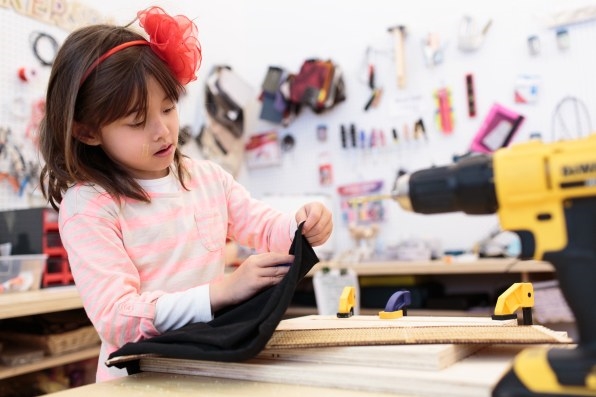
At startup Portfolio School in lower Manhattan, students have access to a Makerspace equipped with drills and other prototyping tools. [Photo: Celine Grouard for Fast Company]
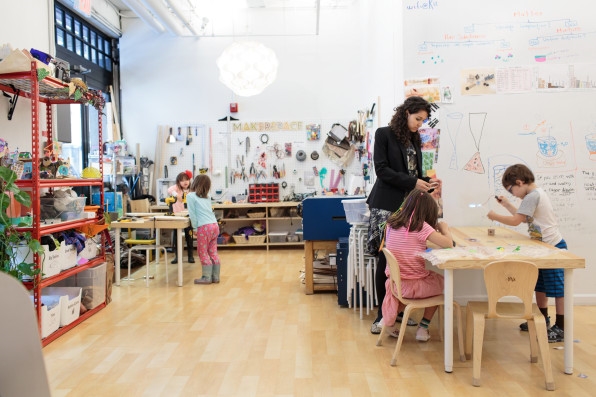
The Makerspace supports project-based learning, which is at the core of Portfolio’s model. [Photo: Celine Grouard for Fast Company]
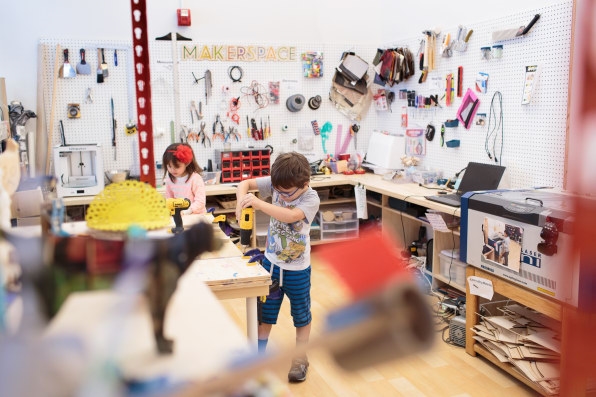
The Makerspace also boasts a laser cutter and a 3D printer. [Photo: Celine Grouard for Fast Company]
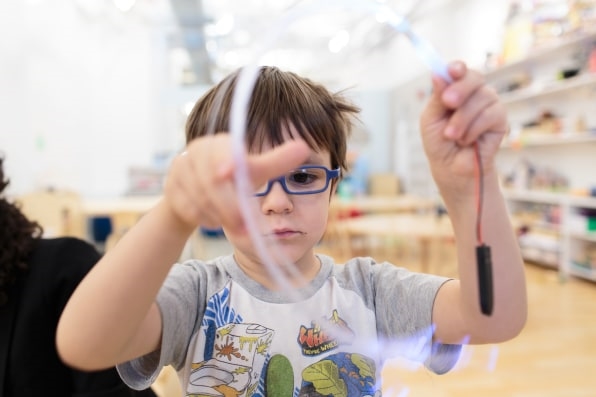
Each interdisciplinary project incorporates lessons in science, technology, math, and writing. [Photo: Celine Grouard for Fast Company]
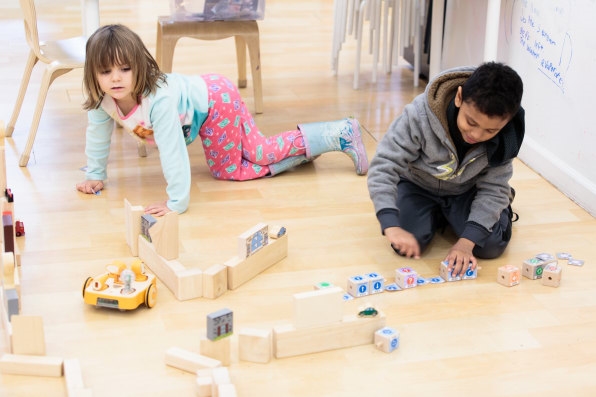
The open layout of the main classroom encourages group collaboration. [Photo: Celine Grouard for Fast Company]
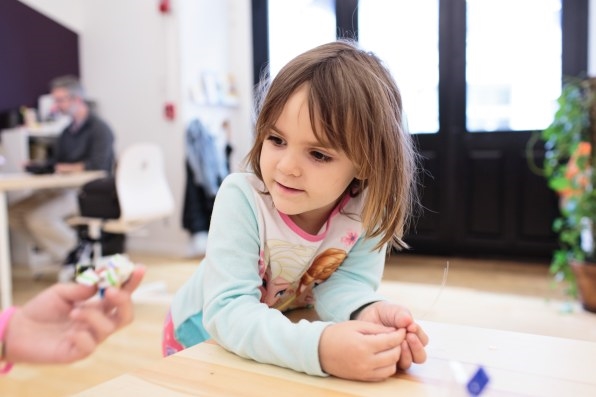
Students pursue individual learning goals while making progress on their projects. [Photo: Celine Grouard for Fast Company]
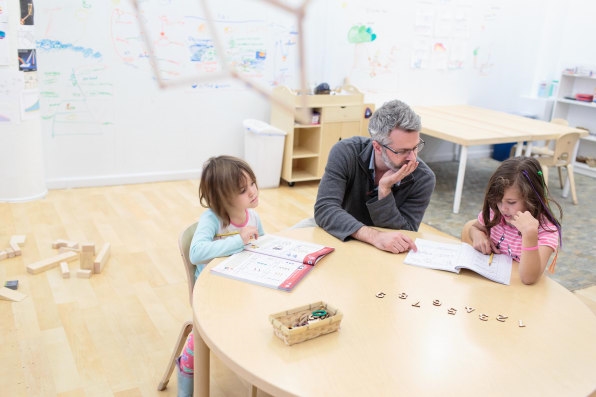
Cofounder and COO Doug Schechtel helps two students with a lesson. [Photo: Celine Grouard for Fast Company]
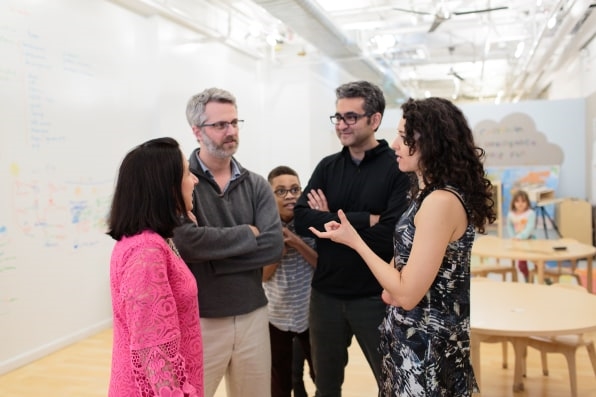
The founding team, including cofounder and CEO Babur Habib (near right). [Photo: Celine Grouard for Fast Company]
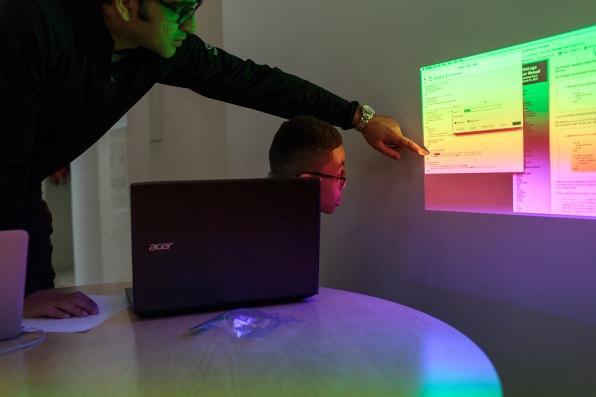
Habib helps a student solve a problem. [Photo: Celine Grouard for Fast Company]
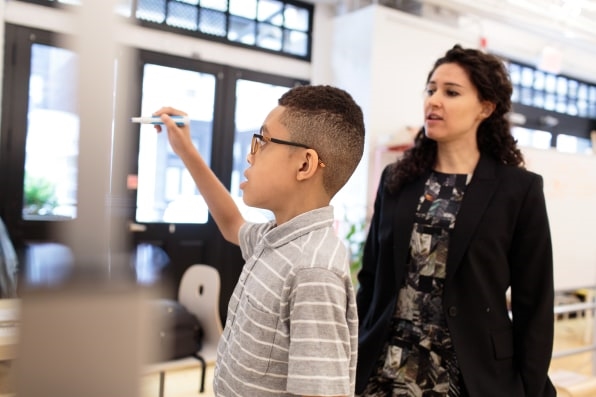
Nancy Otero, founding director of project-based learning, has a background in software engineering. [Photo: Celine Grouard for Fast Company]
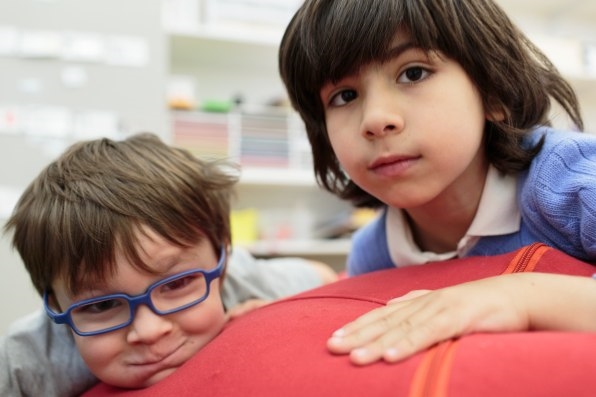
Students of varying ages and grade levels all occupy the same space. [Photo: Celine Grouard for Fast Company]
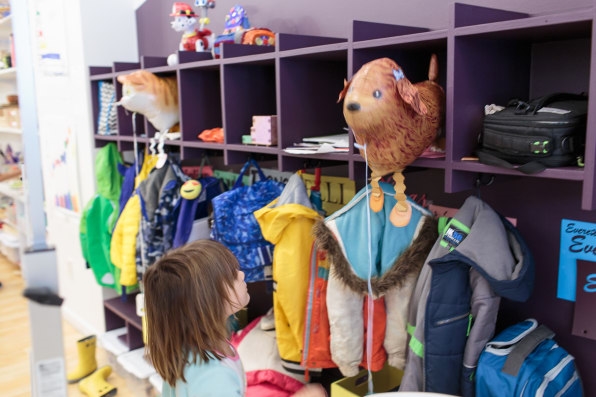
Students set the room in order during their “clean up” song each day. [Photo: Celine Grouard for Fast Company]
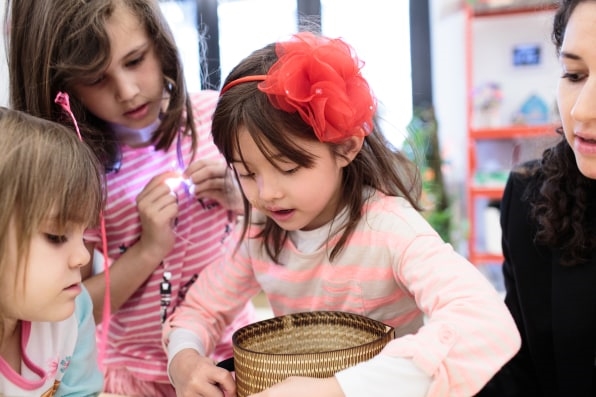
Tiana, 6, works on a project with her fellow students. [Photo: Celine Grouard for Fast Company]
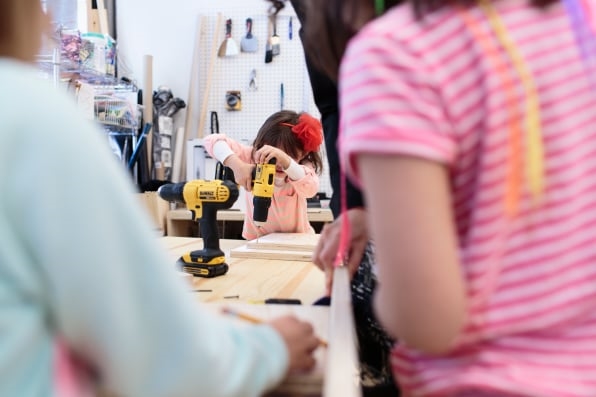
She is also comfortable working on her own in the Makerspace. [Photo: Celine Grouard for Fast Company]
Fast Company , Read Full Story
(58)


